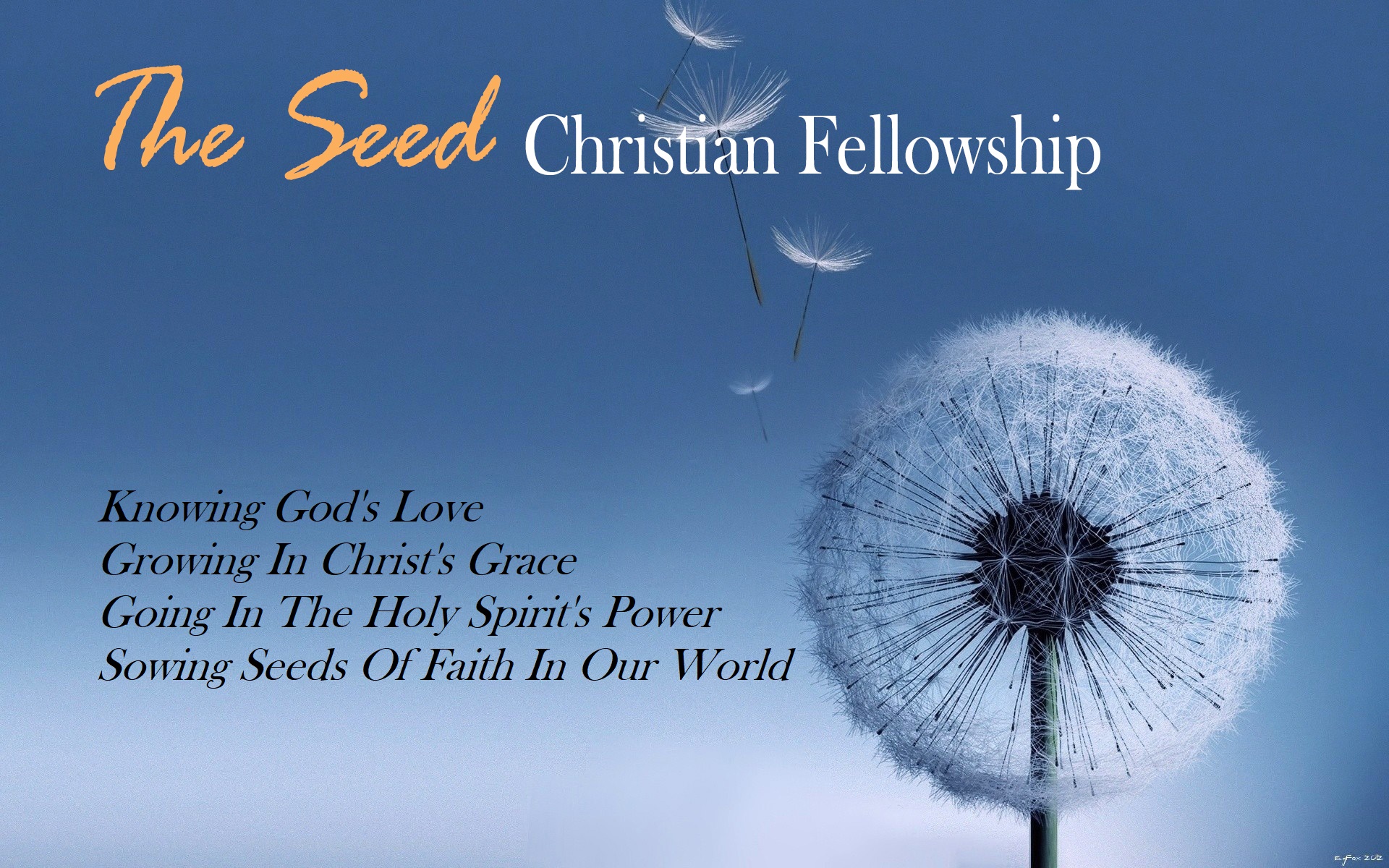
She will give birth to a son, and you are to give him the name Jesus, because he will save his people from their sins.” All this took place to fulfill what the Lord had said through the prophet: “The virgin will be with child and will give birth to a son, and they will call him Immanuel”—which means, “God with us. Matthew 1:21-23
Dear Faithful Seed Sowers,
”It’s beginning to look a lot like Christmas!” I pray daily for you; that your heart and home are filling up with the HOPE, LOVE, JOY and PEACE of the CHRIST child, of CHRISTMAS! (Christmas means more of Christ!)
Last week, we studied the genealogy of Jesus Christ in Matthew’s gospel. Listen, this genealogy is no fairy tale. It’s not Disney nor is it Star Wars or Star Trek. What we learned the first week of Advent is that this is the real deal. This is a true story and we can go back 49 generations. The birth of Jesus starts the JUBILEE! He is our Jubilee in so many ways. Let’s move on to the second week of Advent. (A side note: I don’t know if you’ve noticed, but it’s been a hectic, busy, intense Autumn for my wife and I. We poured ourself in ministry and went to 3 far away places—where Jac fell, went to the ER and needed PT. Then I had my health issues and went to ER. The truth is I just don’t feel well. My doctor rechecked my chest xrays and called to say he is referring me to both a cardiologist and a pulmonologist. Of course, that was yesterday, December 21st! Will get this done early next year. In all truth and honesty, I am struggling with my breathing and with debilitating headaches. It all started after my hernia surgery when I was put under. I do have a partial, lower-left collapsed lung and I am sure this is the cause of my concerns. Please remember to pray for me and for my medical care. Thank you.)
This week’s devotional is on the second candle of Advent when we look at how God’s love now works through the line of Abraham. This is the greatest story ever told: From the cradle through the cross.
Remember —- put your self into the ancient story and don’t leave until you’ve put the story in you anew!
Today we come to the Christmas story. And at first glance it reads like it could be another legend or a fairy tale. Here is a story about someone from a different world who breaks into our world and has miraculous powers. This Jesus character can calm the storms in our lives. Jesus, the Messiah, the Anointed One, heals people; not only that He raises people from the dead. Then the antagonists — the enemies— come onto the scene and turn on him. They not only turn on Jesus, but they put Him to death. Just when it seems like all hope is over, Jesus rises from the dead and saves those who call upon His name. (And you will name Him JESUS for He will save His people from their sin!)
So many people read the stories of Jesus, His miracles and resurrection, and they think, “Wow! Another great fairy tale!” Indeed, it looks like the Christmas story is one more story that gives us fiction and fairy tales. (The big guy in the red suit? Reindeer?)
But Matthew’s Gospel refutes that by grounding Jesus in history. The story of Jesus is not “once upon a time” nor is it—”In a galaxy far, far away.” Jesus’ story is not about going to Disneyland to see all the magnificent make-believe in a small world. Matthew tells us that the story of Jesus is real, and is grounded in history. Jesus Christ is not one more lovely story pointing to the unrealities of make believe. Jesus IS the true reality to which all the stories of this Bible we read. Jesus is the foundation built upon 49 generations.
The common starting point intertwined within each of the four Gospels begins with the ministry of John the Baptist. But before they get to the ministry of John the Baptist, each of the Gospel writers has a unique introduction that precedes its account of John the Baptist’s ministry. Mark begins with a simple one-line statement: “The beginning of the gospel of Jesus Christ, Son of God.” Luke starts with a personal first-person account of his reasons for writing, directed to an influential friend whose name was Theophilus, followed by a detailed account of the miraculous births of John the Baptist and Jesus. Luke’s genealogy of Jesus does not appear until chapter 3. John’s gospel has a prologue that says, “In the Beginning was the Word and Word was with God and the Word was God.” John traces Jesus’ ancestry to eternity past and speaks of the incarnation without any specific mention of Jesus’ miraculous conception or birth.
Not so the gospel of Matthew. Matthew begins with a genealogy that traces Jesus’ ancestry first to King David and then further back to Abraham.
Beginning a book with a genealogy may seem strange to us, “just a listing of names” and, to be honest with you, I think so many of us skip over the first seventeen verses of Matthew. Maybe because it is a genealogy with a lot of names that are hard to pronounce. Maybe we skip over it because we do not understand the significance.
I love to spend my free time working on my ancestry through ancestry.com. My wife and I did our DNA tests so we could see who some of our relatives are. Now I know that can be good and bad. You find the in-laws and the out-laws. I have printouts of my relatives. I will not bore you with the names and dates. My wife said she would not let me … ha. There are a lot of names that are hard to pronounce, especially in her Italian genealogy. (Conigliaro, Trupiano, Mirabella, Di Lorenzo…)
My grandmother on my dad’s side raised me after my brother’s death. Her name was Margaret. I spent time with her, and she is the one who was responsible for bringing me to church. She was a staunch, Scottish/English Presbyterian. When I met and fell in love with my wife, I brought her up to Illinois from Kirksville, Missouri, to meet my grandmother. I told Nanny, that this was Jacalyn Trupiano and that I loved her and wanted to marry her. Nanny looked at me, looked at Trupi and said, “I assume she is Italian and Catholic.” And then before I could say anything, she said, “Well, David, I am not going to any Catholic wedding.”
Nanny and my grandfather did not travel down to St Louis for our wedding but when our first daughter was born, she took Jenni in her arms and started cooing and rocking her and she said, “Well, you know, Jennifer, you can be a DAR— Daughter of the American Revolution—but your mother cannot!” My wife looked at her and smiled and said, “Nanny, did not my relatives, Christopher Columbus, an Italian, drive the boat your relatives were on?” Nanny laughed and said, “Jackie, I think we are going to be good friends after all.” At the time, I did not understand that Nanny had done her ancestry—all the way back to the Mayflower and beyond. She was so very proud of her heritage. Through Ancestry, I have gone back thirteen generations, and can go two generations ahead. I come from royalty—from Lords and Ladies and Doctors and Pastors. I now understand why Nanny was so very proud of the Spencer line. (Princess Diana?)
Today we live in a very individualistic culture where you recommend yourself to others with a list of your degrees, work experience, and accomplishments. We call it our resume. And, sometimes, people embellish their resumes with fairy tale truths.
In the Old Testament times and in the time of Jesus that is not it how it was done. This was done through their “LINE” through their ancestry. Theirs was a more communal, family-oriented society. It’s like when Ancestry dings my phone and says, “You have a new match!” It’s exciting to me to go find other relatives and to see how we correlate in my “line”!
Matthew chapter one might look like a genealogy with a list of names but In those times it was your family pedigree, your clan—the people you were connected to—that constituted your résumé. So, a genealogy was a way of saying to the world, “This is who I am and this is where I come from.” The purpose of a genealogical résumé was to impress onlookers with the high quality and respectability of one’s roots.
What is so fascinating with Matthew’s account is that he does the very opposite with Jesus. This genealogy is shockingly unlike other ancient genealogies. To begin with, there are five women listed in the genealogy, all mothers in the line of Jesus. This will not strike modern readers as unusual, but in ancient, patriarchal societies, a woman was virtually never named in such lists, let alone five women!
In the times of Jesus, women were “gender outsiders.” Yet when Matthew begins his Gospel, there they are—five women listed in Jesus’ genealogy. Also, an interesting note is that most of the women in Jesus’ résumé were not all Jews but Gentiles (Tamar, Rahab, Ruth) …Canaanites and a Moabite. To the ancient Jewish people, these nations were unclean. The people from these nations were not allowed into the tabernacle or temple to worship. We could call them “racial outsiders,” and yet, here they are listed in Jesus’ genealogy.
As I studied, I knew I had to look at these women. Who were they? Why did Matthew mention them?
TAMAR: In Genesis 38 we are told the story of Tamar. Tamar tricked her father-in-law, Judah, into sleeping with her (even though in the full story it is also clear that Judah had been unjust to her). This was an act of incest which was against the law of God. Another note in this genealogy is that even though Jesus was descended from Perez not Zerah, Matthew includes both Perez and Zerah, both Judah and Tamar, to make sure we bring the whole story to mind. It was out of that dysfunctional family that the Messiah came. (Are you listening?)
RAHAB: In Joshua chapter2 and 6 we have the story of Rahab. In verse five of Matthew one we find the name of Rahab. She was not just a Canaanite woman, but she was also a prostitute. Notice that from the line of Rahab we get King David. (Still listening?)
RUTH: Next we are told about Ruth, the Moabite woman, who followed her mother-in-law, Naiomi, back to Bethlehem and ends up marrying Boaz. They have a son named Obed. Ruth is famous for saying to Naomi when Naomi tries to leave Ruth back in Moab — “But Ruth replied, “Don’t urge me to leave you or to turn back from you. Where you go I will go, and where you stay I will stay. Your people will be my people and your God my God. Where you die I will die, and there I will be buried. May the Lord deal with me, be it ever so severely, if anything but death separates you and me.” When Naomi realized that Ruth was determined to go with her, she stopped urging her. (Ruth 1:16-18) From this story, Ruth gleans Boaz’s field. Boaz becomes Ruth’s “Kinsman Redeemer” and the line to Jesus is further established!
You have Tamar and Rahab as Canaanite women and Ruth as a Moabite woman. Are you following Matthew yet? Why is Matthew including women in this genealogy?
Perhaps the most interesting character and background story in the whole genealogy, however, is in verse six. There it says that in Jesus’ line is King David. You would think, if you were writing your resume or genealogy, you would want someone like King David in your genealogy. What is so fascinating is how Matthew records this, David was the father of Solomon, “whose mother had been Uriah’s wife. ”Does that name ring a bell? Uriah? This story is recorded in 2 Samuel chapters11 and 12. Why not just give her name? Her name was Bathsheba, but I believe hat Matthew is summoning his Jewish readers to recall a tragic and terrible chapter of Israel’s history. King David had an affair with Uriah’s wife Bathsheba, she became pregnant, and he had her husband killed so he could marry her. Why is this story recorded in the genealogy of Jesus?
Do you know why Matthew leaves off the name “Bathsheba”? It is not a slight of Bathsheba—it is a slam of David. It was out of that dysfunctional family, and out of that deeply flawed man, that the Messiah came. (I pray you are still listening. We all have families that can be labeled “dysfunctional”.)
Perhaps Jesus’ genealogy is the greatest story of all time that precedes the greatest story of all time.
So What?
The story of Jesus is not fiction nor is it a fairy tale. The story of Jesus is truth.
In this genealogy of Jesus—the Son of God–we have moral outsiders—adulterers, adulteresses, incestuous relationships, prostitutes. We have Kings who worshiped foreign Gods and had their own failures. Indeed, we are reminded that even the prominent male ancestors—Judah and David—were moral failures at one time of their lives. (God redeems.)
I believe that this genealogy tells us about cultural outsiders, racial outsiders, and gender outsiders. The Law of Moses excluded these people from the presence of God, and yet, right here, they are all publicly acknowledged by Matthew (the tax accountant, the guy who is good with numbers and details) as the ancestors of Jesus, the SAVIOR of the world.
So what does it mean? First, it shows us that people who are excluded by culture, excluded by respectable society, and even excluded by the law of God, can be brought into Jesus’ family.
In Matthew’s genealogy we find a truth that is to be celebrated and told over and over again. It is not the good people who are in and the bad people who are out. Everyone is in only by the grace of Jesus Christ. It is only what Jesus has done for you that can give you standing before God. We are in the genealogy of Jesus because we are adopted into his family. We are all OUT before Jesus, we are all dysfunctional and, yet, we are beloved by God. Brought into the line, grafted in to be made whole and forgiven.
This genealogy is the prequel to the greatest story ever told. Do you know Jesus as Lord and Savior? I pray you do.
See you Sunday!
God loves you and so do I,
Pastor Dave



Recent Comments